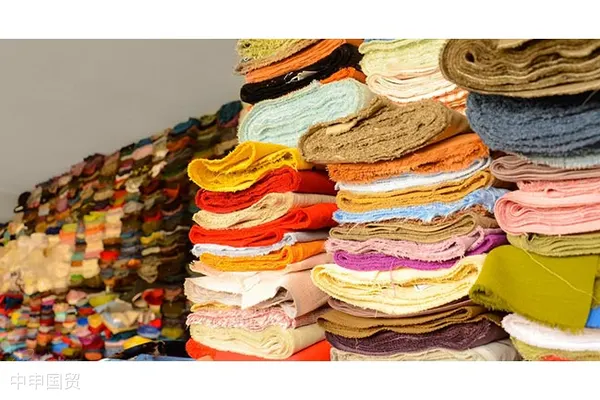- Shanghai Zhongshen International Trade Co., Ltd. - Two decades of trade agency expertise.
- Service Hotline: 139 1787 2118
This year, Chinas yarn and fabric export trade has progressed under pressure. Affected by changes in the global trade environment, regional political tensions, and economic restructuring, exports to many major global markets have declined, but exports to the largest market, ASEAN, still maintained double-digit growth.

Overall export data
According to China Textileimport and exportData from the Yarn Branch of the China Chamber of Commerce for Import and Export of Textiles shows that in the first five months of this year, Chinas total export value of yarn and fabrics reached $33.33 billion, a year-on-year increase of 2.3%. Among these, yarn exports amounted to $5.81 billion, a year-on-year decrease of 2.9%, while fabric exports reached $27.53 billion, a year-on-year increase of 3.5%.
ASEAN market performance
ASEAN is the largest export market for Chinas yarn and fabric products, accounting for over 20% of the total export value. Data shows that in the first five months of this year, Chinas exports of yarn and fabrics to ASEAN amounted to $11.59 billion, a year-on-year increase of 11.5%. Among these, yarn exports were $1.3 billion, a year-on-year increase of 14.8%, and fabric exports were $10.29 billion, a year-on-year increase of 11.1%. In segmented markets, yarn exports to Vietnam increased by 13.7% year-on-year, while fabric exports grew by 13.8%. Yarn exports to Cambodia rose by 33.8%, and fabric exports increased by 34.3%. However, yarn exports to Myanmar declined by 16.5%, and fabric exports dropped by 5.4%.
Performance in South Asian Markets
Chinas yarn exports to three South Asian countries showed varying growth trends. Data reveals that in the first five months of this year, yarn exports to India amounted to $350 million, a year-on-year decrease of 40.1%; exports to Bangladesh reached $600 million, a year-on-year increase of 12.3%; and exports to Pakistan were $410 million, a year-on-year increase of 44.2%.
Performance in Middle Eastern, North American, and European Markets
Apart from ASEAN and South Asian markets, Chinas yarn exports to the Middle East, North America, and Europe have declined this year. Data indicates that in the first five months, yarn exports to Middle Eastern countries totaled $830 million, a year-on-year decrease of 5.2%. Among these, exports to Turkey fell by 18%, exports to Egypt dropped by 1.7%, while exports to the UAE increased by 47.9%. In Europe, yarn exports to Poland declined by 37%, exports to the UK decreased by 26%, and exports to Russia fell by 24.5%.
Performance by Product Category
From a product-specific perspective, among yarn products, only cotton yarn exports showed growth. Data shows that in the first five months, cotton yarn exports amounted to $500 million, a year-on-year increase of 13.5%. During the same period, chemical fiber yarn exports were $48.05 billion, a year-on-year decrease of 2.2%; silk yarn exports were $60 million, a year-on-year decrease of 1.3%; and wool/animal hair yarn exports were $320 million, a year-on-year decrease of 32.8%.
Among fabric products, only chemical fiber woven fabrics maintained growth in export value. Data reveals that in the first five months, chemical fiber woven fabric exports reached $11.99 billion, a year-on-year increase of 3%. During the same period, cotton fabric exports were $3.94 billion, a year-on-year decrease of 5.8%; silk woven fabric exports were $130 million, a year-on-year decrease of 16.1%; and wool/animal hair woven fabric exports were $130 million, a year-on-year decrease of 4.5%.
Import Data
On the import side, Chinas yarn and fabric imports maintained growth. According to data from the Yarn Branch of the China Chamber of Commerce for Import and Export of Textiles, from January to May, Chinas cumulative imports of yarn and fabrics amounted to $3.41 billion, a year-on-year increase of 9.3%. Among these, yarn imports were $2.32 billion, a year-on-year increase of 14.2%, while fabric imports were $1.09 billion, a year-on-year decrease of 0.03%.
From a broad product category perspective, cotton yarn dominates Chinas yarn imports, accounting for 70% of the total yarn import value. Data shows that in the first five months, Chinas cotton yarn imports amounted to $1.62 billion, a year-on-year increase of 15.1%, with import volume reaching 666,000 tons, a year-on-year increase of 23.3%. The top five sources of cotton yarn imports are all from Asia, collectively accounting for 90% of the total. Data reveals that in the first five months, Chinas cotton yarn imports from Vietnam increased by 14.9% year-on-year, imports from Pakistan rose by 12.2%, imports from Uzbekistan surged by 79.5%, imports from Malaysia grew by 26.9%, while imports from India declined by 6.2%.
Overall, Chinas yarn and fabric exports have maintained growth in a complex international environment but still face numerous challenges. By continuously optimizing product structures, exploring new markets, and enhancing product value-added, Chinas yarn and fabric industry is expected to achieve more stable development in the future.
Related Recommendations
? 2025. All Rights Reserved. Shanghai ICP No. 2023007705-2  PSB Record: Shanghai No.31011502009912
PSB Record: Shanghai No.31011502009912










